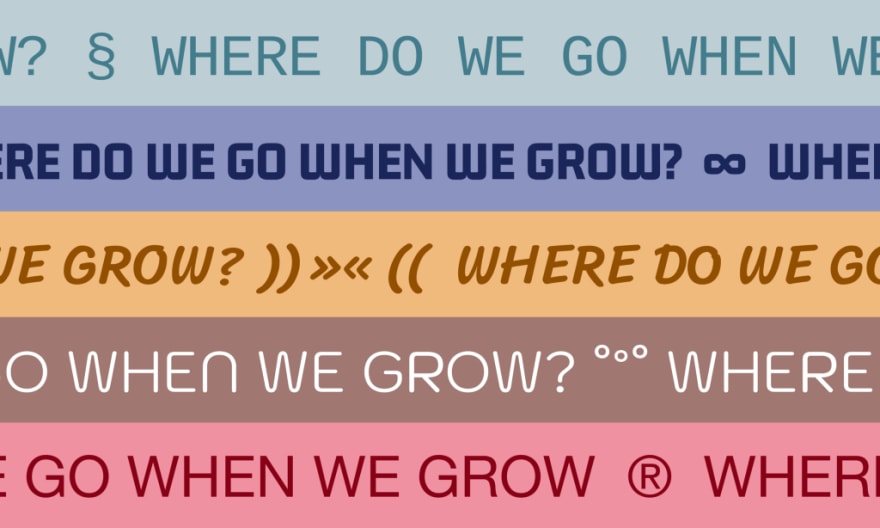Getting a seat at the table doesn’t mean you need to abandon your desk.

For the past two decades, digital product design / UX has been shifting to become a more strategic discipline within organizations. Partially because business leaders have started to pay attention to how design-driven companies have seen tangible return over investment in design, going from tiny startups to successful global businesses. But partially because designers have fought hard for it : one of the most heated debates in our industry in recent years touched on how designers needed to understand about business, learn to map design decisions to business KPIs, and ultimately secure a seat at the table where strategic decisions are made within an organization.
As companies continue to increase their investment in design, and digital teams continue to grow, the company leadership feels the need of assigning managers who can keep those different design teams up and running.
Senior individual contributors (ICs) are expected to become leaders.
Leaders are expected to become managers.
But designing and managing are two very different jobs.
The (invisible) pressure of becoming a manager
Designers love what they do, but at some point in their careers, they feel the pressure to become a manager. In some companies, shifting to a managerial position feels like the only path of growth. But “growth” can mean different things for different people. Why do designers want to be promoted to a more senior position in the first place?
- To have a broader impact on their organization. For a design idea to be implemented in larger companies, it has to get the buy-in from multiple stakeholders. In his article about the impact of product design, Josh Taylor, former Design Director of Evernote, reminds us that as designers grow and want their work to have a more significant impact in the team, organization, and society, they tend to naturally let go of the design craft and execution and move towards organization design and team management.
- To continue to get salary increases. The reality of our industry is that the most obvious path to a higher salary is a managerial title. As an industry, we need to do a better job of treating senior individual contributors as equals with people managers. The status quo in most in-house teams is that if you have designers reporting to you, chances are you’ll make at least 20% more money than the most senior person you manage.
- For the prestige and clout of being a leader. Our industry turns the spotlight to directors, VPs, Heads of Design, and people with leadership-sounding titles. These people are given prime space in design conferences, blogs, press articles, and social networks, and in some cases, they become real celebrities of the corporate world.
- For peer pressure. Linkedin has made everyone’s career trajectories easier to compare, and like any other social network, made the grass look deceivingly greener on the other side. If everyone that I went to school with is getting promoted, why not me? Am I lagging behind? Have I been stuck in the same position for too long? What story am I going to tell on my resumé?
Are designers prepared, though? According to the Bank of England’s chief economist, poor management is the principal cause of the U.K.’s stagnant productivity. Another analysis by job market analytics company Burning Glass states that “management skills represent one of the biggest skills gaps in the job market”, and that “management roles have larger skills gaps than those of the people they manage.”
Prepared or not, most designers decide to take that new position they’ve been offered.
Gradually, their day is taken over by activities that have very little to do with the ones that made them be recognized as great, senior designers in the first place.
Where do we go when we grow?
According to Tanner Christensen, head of design at Gem and a designer with nearly 20 years of experience, the answer is often: to an entirely different role. In his brilliantly written article “Where do IC designers go once they peak?”, Tanner highlights that after a few years as an Individual Contributor (IC), designers in product companies today find themselves seemingly stuck.
“Today we lose many remarkable individual contributors (IC) product designers to the management track because it doesn’t feel like there’s any other way to grow and do meaningful work at-scale. We continuously teach others that people managers have more influence and impact on the world than ICs, partially because the inherent power dynamic of someone who makes design decisions vs someone who makes decisions that directly impact the career of the other person.”
— Tanner Christensen
Another path is possible
Some companies have started to pay attention to this trend, and offer career paths that give equal opportunities for managers and individual contributors. The model has proven to be successful in tech positions and has recently started to be applied to design career tracks as well.
Zendesk Creative, for example, has an entire growth path for individual contributors that doesn’t stop at the “senior” level. Figma has been thinking about their career paths in a pretty fluid way, focusing on skills as “superpowers” that people can bring to the team. Intercom defines their career paths based on Results and Behaviors, stating that “leadership can be practiced by those on both the management and the IC path”. And plenty of other companies have been more transparent and open about how they define their career paths internally.
These companies understand a designer’s career progression should be less about where they sit in the company org chart, but more about how much value they can bring to the company.

You can’t become what you can’t see
As we’re editing and publishing articles here at the UX Collective, we have noticed an abundance of resources for designers who want to become leaders/managers, but a gap for those who want to continue to focus on their craft. If you’re looking to pursue the leadership or management track, books like Julie Zhuo’s The Making of a Manager, or articles like José Torre’s How can a designer become a leader are great starting points.
So we decided to start a new series.
‘Leading with craft’ is a limited series of articles where we shed a light on stories of designers with successful careers and who continue to grow as individual contributors.
We’ll be talking to information architects, graphic designers, researchers, product designers; people from different disciplines who share one thing in common: they have never let their seniority move them away from their craft, their practice, and their passion for what made them great in the first place.
Hopefully, this series will show to young designers that they don’t have to abandon their craft as they grow in their careers. And for senior designers who are at a point where they need to make a decision whether to pursue a managerial path, we hope this series will inspire them to have ‘the talk’ with their managers about revisiting what growth looks like for them.
If you have any suggestions of people we should be talking to, send us an email: hello@uxdesign.cc. We’re looking for designers with more than 10 years of experience who have been successful in their careers and who haven’t really stopped being hands-on because of their seniority/level.
Start here:
Part 1: Abby Covert, information architect















Latest comments (0)